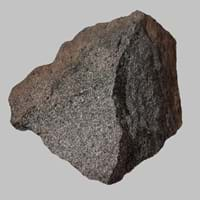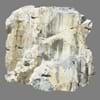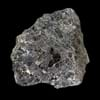Definition
Wehrlite is an ultramafic and ultrabasic rock that is a mixture of olivine and clinopyroxene. It is a subdivision of the peridotites
Boninite is a mafic extrusive rock which is high in magnesium and silica content, formed in fore-arc environments, typically during the early stages of subduction
Discoverer
Alois Wehrle
Unknown
Etymology
From the name of a professor, Alois Wehrle
From its occurrence in the Izu-Bonin arc south of Japan
Class
Igneous Rocks
Igneous Rocks
Sub-Class
Durable Rock, Medium Hardness Rock
Durable Rock, Hard Rock
Other Categories
Coarse Grained Rock, Opaque Rock
Fine Grained Rock, Opaque Rock
Texture
Banded
Aphanitic to Porphyritic
Color
Dark Greenish - Grey, Green
Bluish - Grey, Brown, Colourless, Green, Grey
Durability
Durable
Durable
Scratch Resistant
Yes
Yes
Appearance
Rough and Banded
Dull and Soft
Interior Uses
Decorative Aggregates, Interior Decoration
Decorative Aggregates, Homes, Kitchens
Exterior Uses
As Building Stone, As Facing Stone, Garden Decoration, Paving Stone
Garden Decoration, Office Buildings
Other Architectural Uses
Curbing
Not Yet Used
Construction Industry
As Dimension Stone, Cobblestones
As a Flux in the Production of Steel and Pig Iron, As a Sintering Agent in Steel Industry to process Iron Ore, As Dimension Stone, Cement Manufacture, for Road Aggregate, Making natural cement, Manufacture of Magnesium and Dolomite Refractories
Medical Industry
NA
Not Yet Used
Antiquity Uses
Artifacts, Monuments, Sculpture, Small Figurines
Artifacts
Commercial Uses
Cemetery Markers, Creating Artwork, Gemstone, Jewelry
An Oil and Gas Reservoir, Cemetery Markers, Creating Artwork, Soil Conditioner, Source of Magnesia (MgO)
Types
Not Available
Not Available
Features
Constitutes upper part of the Earth's mantle, Generally rough to touch, Is one of the oldest rock
Available in Lots of Colors and Patterns, High Mg content, Is one of the oldest rock
Archaeological Significance
Monuments
Used
Not Yet Used
Famous Monuments
Data Not Available
Not Applicable
Sculpture
Used
Not Yet Used
Famous Sculptures
Data Not Available
Not Applicable
Pictographs
Used
Not Used
Petroglyphs
Used
Not Used
Figurines
Used
Not Yet Used
Formation
Wehrlite is a fine-grained, hard rock which is a type of metasomatite, essentially altered basalt. It forms with or without crystallization, either below the surface as intrusive rocks or on the surface as extrusive rocks.
Boninite is a type of Igneous rock which is formed through the cooling and solidification of lava or existing rocks.
Mineral Content
Pyroxene
Amphibole, Apatite, Biotite, Feldspar, Garnet, Hornblade, Ilmenite
Compound Content
Aluminium Oxide, CaO, Carbon Dioxide, Iron(III) Oxide, FeO, Potassium Oxide, MgO, Sodium Oxide, Phosphorus Pentoxide, Silicon Dioxide, Titanium Dioxide
Silicon Dioxide
Types of Metamorphism
Burial Metamorphism, Cataclastic Metamorphism, Contact Metamorphism, Impact Metamorphism, Regional Metamorphism
Burial Metamorphism, Cataclastic Metamorphism, Contact Metamorphism, Regional Metamorphism
Types of Weathering
Biological Weathering, Chemical Weathering, Mechanical Weathering
Biological Weathering
Types of Erosion
Chemical Erosion, Coastal Erosion, Water Erosion
Chemical Erosion, Coastal Erosion, Wind Erosion
Grain Size
Coarse Grained
Fine Grained
Fracture
Irregular
Uneven
Porosity
Less Porous
Less Porous
Cleavage
Perfect
Not Available
Specific Gravity
8.4
2.5-2.8
Transparency
Opaque
Opaque
Density
2.6-3.7 g/cm3
Not Available
Specific Heat Capacity
Not Available
Resistance
Heat Resistant, Impact Resistant, Pressure Resistant
Heat Resistant, Impact Resistant, Pressure Resistant, Wear Resistant
Deposits in Eastern Continents
Asia
China, India, Indonesia, Kazakhstan, Russia, South Korea, Thailand, Turkey
Not Available
Africa
Morocco, South Africa
South Africa
Europe
Finland, France, Georgia, Germany, Great Britain, Italy, Kazakhstan, Netherlands, Norway, Spain, Switzerland, Venezuela
England, Finland, United Kingdom
Others
Not Yet Found
Antarctica, Greenland
Deposits in Western Continents
North America
Canada, USA
USA
South America
Brazil
Colombia, Uruguay
Deposits in Oceania Continent
Australia
New Zealand, Western Australia
New Zealand, Western Australia










